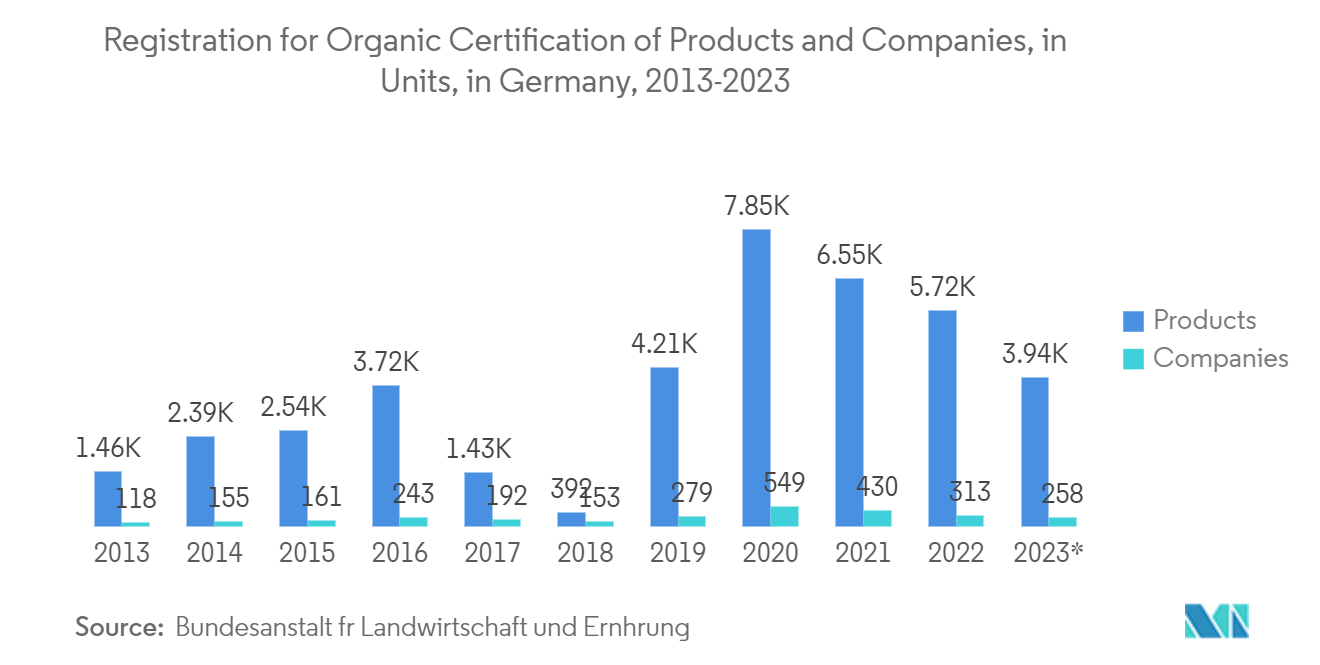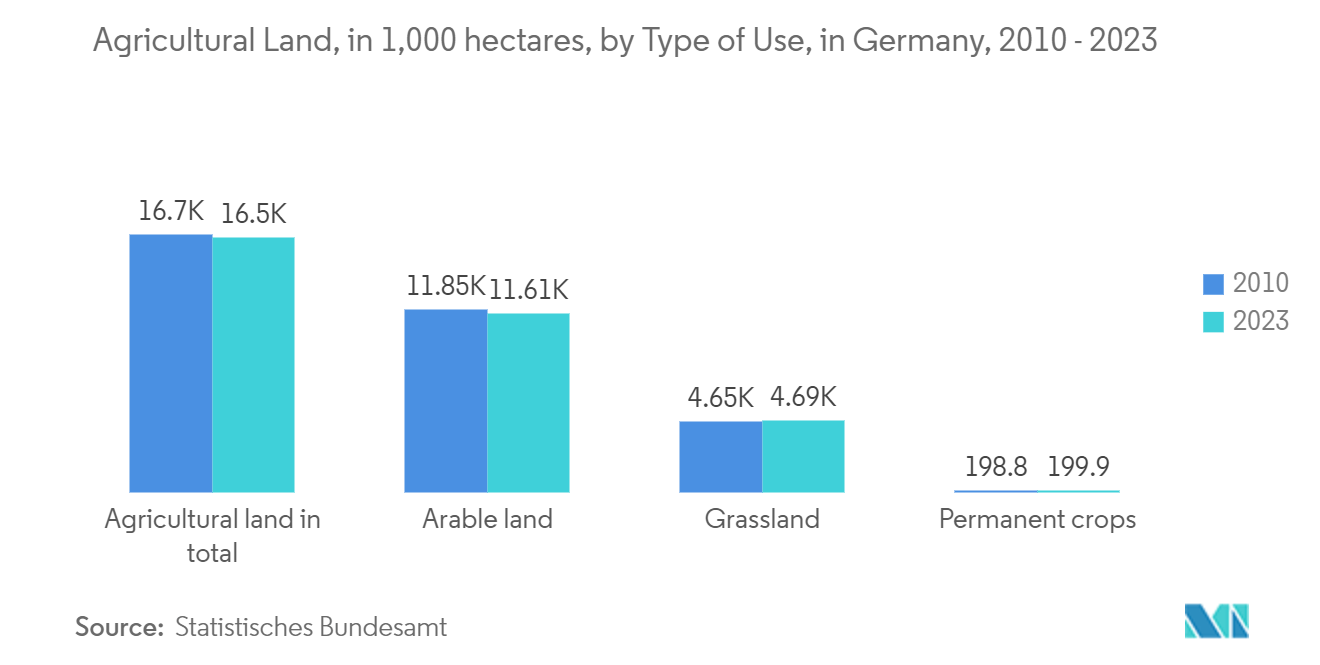Market Trends of Europe Irrigation Valves Industry
Government Initiatives to Promote Water Conservation
- The rising demand for irrigation equipment in farms and agricultural lands, the growing adoption of modern techniques in agriculture, and several government initiatives for water conservation are creating a favorable market scenario for the studied market growth.
- For instance, the European Commission unveiled its European Union (EU) soil strategy for 2030, which aims to provide farmers with the tools and data they need to begin the transition. To support and scale farmer access to measurement, reporting, and verification (MRV) systems, the Commission assists member states in establishing free soil analyses while improving its geospatial analysis and modeling capacity for soil-related processes, thereby harmonizing monitoring and reporting requirements.
- According to the European Commission, in November 2022, the monthly EU trade flows of agriculture and food items reached a new high of EUR 36.9 billion (USD 43.55 billion), a 23% rise over the same period in 2021 (January-November). This can be explained by a 17% and 34% growth in the value of EU agri-food exports and imports, respectively.
- Furthermore, according to European Environmental Agency, the impact of climate change could result in up to 16% losses in EU agricultural income by 2050. In order for Europe to maintain sustainable agriculture, farmers must turn to organic and high nature value (HNV) farming rather than further intensification. As a result, the demand for automated and sustainable farming would rise. For instance, according to BÖLW, in 2022, there were 36,548 organic farming businesses in Germany. Thus the demand for irrigation valves would grow in forecasted years.
- According to the International Energy Agency (IEA), soil degradation costs EUR 97 billion (USD 114.46 billion) annually. This cost is significantly higher than the bill for agricultural subsidies under the Common Agricultural Policy. Such degradation is both a threat to food security and a financial burden. To combat soil degradation, there is an ongoing need for drip and sprinkler irrigation, which uses valves to deliver water to different crops based on their growth stages. It also helps farmers predict agricultural productivity levels by detecting changes in soil moisture levels over time and allowing them to decide when to irrigate next.
- Furthermore, droughts and heavy rains caused by climate change will exacerbate soil degradation. Hence, there is a constant need for irrigation to address this issue, which can be provided by using valves to control water release in the fields better. For instance, the European Commission's latest Common Agricultural Policy (CAP) reform aims to pave the way for scaling climate-smart agriculture. Eco-schemes will account for 18% of the CAP budget. These payments aim to incentivize farmers' long-term adoption of climate-smart practices by tying specific techniques to new revenue streams. Demand for irrigation valves is expected to rise as climate-smart agriculture becomes more popular in the coming years.

Germany Dominates the Market
- The European Union is divided into countries. For example, the average farm in Germany is 25 times larger than the average farm in Romania. These disparities span income, ownership structures, and agriculture type. Income, ownership structures, and agriculture type all contribute to these differences. As a result of its high awareness of irrigation valves, use of modern technologies, and R&D activities, Germany has the largest market share in the irrigation valves market by region.
- Furthermore, according to World Economic Forum (WEF), the adoption rate of climate-smart practices in Western Europe, like Germany, is at 45% compared to 21% in Eastern European countries. Hence, the strong need for irrigation valves in this country may be ascribed to the abundant supply of fresh water and ideal climatic conditions, such as adequate rainfall throughout the year, which assists in higher agricultural yields and hence drives demand.
- Furthermore, the European Commission approved Germany's CAP Strategic Plans in November 2022. Germany's Plan focuses on climate and environmental protection while also ensuring the competitiveness and resilience of farms and rural areas. Organic farming is specifically supported with nearly EUR 2.4 billion (USD 2.83 billion), and approximately 30% of agricultural land will benefit from practices that reduce emissions or maintain/improve carbon storage, improve soil quality, or improve water quality.
- Moreover, the German government intends to train and advise 2,80,000 farmers and rural stakeholders, as well as participate in other knowledge transfer activities, in order to help them improve their environmental and climate-related performance. Furthermore, specific funding will be made available to encourage the use of agricultural insurance schemes in the event of a drought or other adverse weather event. As a result of their use in sustainable farming techniques, such factors will drive the valves market in the coming years.


